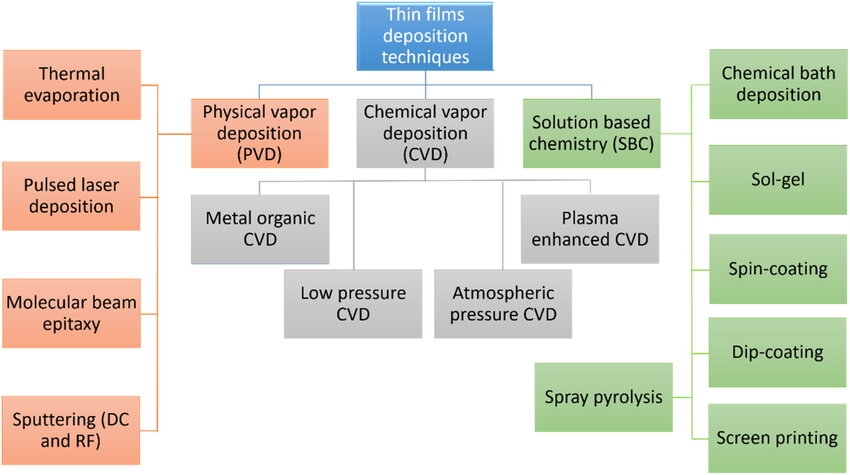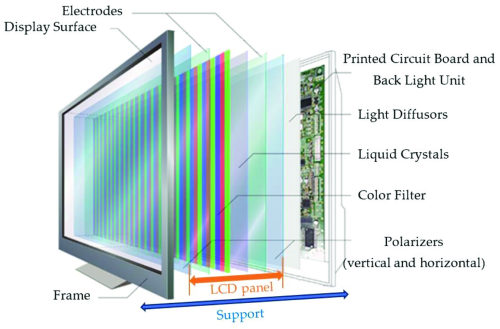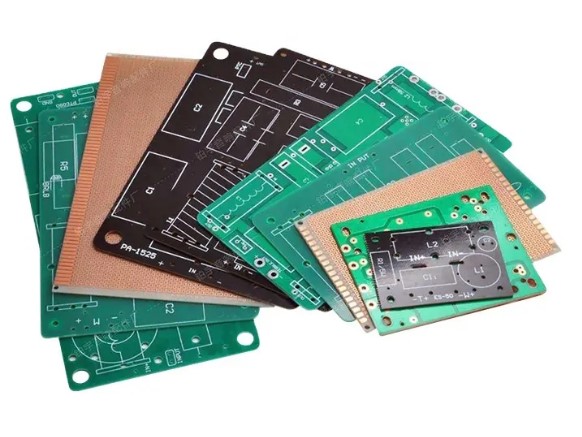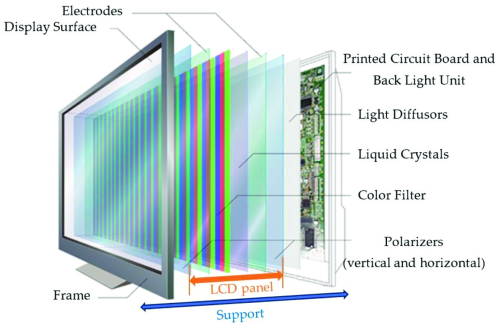
Liquid Crystal Display (LCD): An Overview
What Is Liquid Crystal Display (LCD)
A Liquid Crystal Display (LCD) is a flat-panel display technology used in a wide range of devices, from televisions and computer monitors to mobile phones and digital clocks. It utilizes liquid crystals, which are substances that can change their optical properties when an electric current is applied, making them ideal for use in displays. The technology was first introduced in the 1970s and has since evolved to become one of the most common display technologies.
Unlike older display technologies such as cathode ray tube (CRT) displays, LCDs are thinner, lighter, and more energy-efficient. The basic principle behind an LCD is its ability to control light in a precise manner, using liquid crystals to modulate the passage of light through a matrix of thin film transistors (TFTs), creating images and text.
 [1]
[1]
How LCD Works
An LCD works by sandwiching a layer of liquid crystals between two polarizing filters and applying voltage across the liquid crystals. The liquid crystals themselves do not emit light; instead, they control the light that passes through them. The display is backlit by an external light source, often LEDs (Light Emitting Diodes), which provide uniform brightness across the screen.
Here’s a step-by-step breakdown of how an LCD functions:
- Backlight: The LCD screen requires a backlight to produce visible images. The light source is usually located behind the display, and it shines through the layers of the LCD panel.
- Polarizers: There are two polarizing filters positioned at the front and back of the LCD panel. These filters control the direction of light waves. The light that comes from the backlight is polarized before passing through the first filter.
- Liquid Crystals: The layer of liquid crystals between the two filters can twist and align when an electrical current is applied. When the liquid crystals are aligned in a specific direction, they allow light to pass through; when misaligned, they block the light.
- Color Filters: To create full-color images, each pixel is divided into subpixels of red, green, and blue (RGB). These subpixels work in unison to create a broad spectrum of colors by adjusting the intensity of the red, green, and blue light that passes through them.
- Image Formation: As the liquid crystals twist or untwist in response to the applied voltage, they modulate the intensity and color of light passing through, creating the images and videos that we see on the screen.
LCD Types and Variants
There are several types of LCDs, each with unique features designed to improve performance in different applications:
- Twisted Nematic (TN): TN panels are the most common and affordable type of LCD. They offer fast response times and are used in monitors and laptops. However, their color accuracy and viewing angles are generally poorer than other types.
- In-Plane Switching (IPS): IPS panels offer better color accuracy and wider viewing angles compared to TN panels. These are popular in high-end monitors, smartphones, and tablets.
- Vertical Alignment (VA): VA panels provide better contrast ratios and deeper blacks compared to TN and IPS panels. They are commonly used in televisions, where image quality is important for watching movies and TV shows.
- Advanced Fringe Field Switching (AFFS): An improvement on IPS technology, AFFS provides superior color accuracy and brightness, often found in professional-grade monitors and high-end displays.
- LED-Backlit LCD: This variant uses LEDs for backlighting rather than the traditional cold cathode fluorescent lamps (CCFLs), offering better energy efficiency and thinner display panels.

LCD vs OLED vs QLED
When comparing LCD to other display technologies like OLED (Organic Light Emitting Diode) and QLED (Quantum Dot LED), several key differences emerge:
- LCD vs OLED: While LCDs use a backlight to illuminate the screen, OLED displays are self-emissive, meaning each pixel generates its own light. This allows OLED displays to achieve true blacks, higher contrast ratios, and better color accuracy than LCDs. OLEDs are also thinner and more flexible, but they tend to be more expensive than LCDs.
- LCD vs QLED: QLED is a variant of LCD technology that uses quantum dots in conjunction with LED backlighting. Quantum dots are tiny particles that emit specific colors when exposed to light, enhancing color accuracy and brightness. QLED displays offer better color performance and brightness than traditional LCDs, but like LCDs, they still rely on a backlight.
Applications of LCD Technology
LCD technology has a wide range of applications across various industries. Some of the most common uses include:
- Consumer Electronics: LCDs are commonly found in smartphones, televisions, computer monitors, and tablets due to their thin form factor, energy efficiency, and affordability.
- Medical Devices: LCDs are widely used in medical imaging systems, patient monitors, and diagnostic equipment for their clarity and ability to display detailed images.
- Automotive Displays: Many modern cars are equipped with LCD dashboards, navigation systems, and infotainment screens, offering better visibility and customization options for drivers.
- Digital Signage: LCDs are frequently used in digital signage applications for advertising, information display, and wayfinding due to their ability to produce bright, sharp images.
- Industrial Applications: LCDs are used in machinery, control panels, and other industrial systems where precise display output is required for monitoring and controlling operations.
Conclusion
Liquid Crystal Display (LCD) technology has revolutionized the way we interact with electronic devices, providing thin, energy-efficient, and affordable displays for a vast range of applications. With continuous advancements in LCD technology, such as LED backlighting and quantum dot enhancements, LCDs remain a dominant force in the display market. For more LCD basics, please check Stanford Electronics.
Reference:
[1] Moundoungou, Idriss & Bouberka, Zohra & Tabieguia, Guy-Joël & Barrera, Ana & Derouiche, Yazid & Dubois, Frédéric & Supiot, Philippe & Foissac, Corinne & Maschke, U.. (2022). End-of-Life Liquid Crystal Displays Recycling: Physico-Chemical Properties of Recovered Liquid Crystals. Crystals. 12. 1672. 10.3390/cryst12111672.




